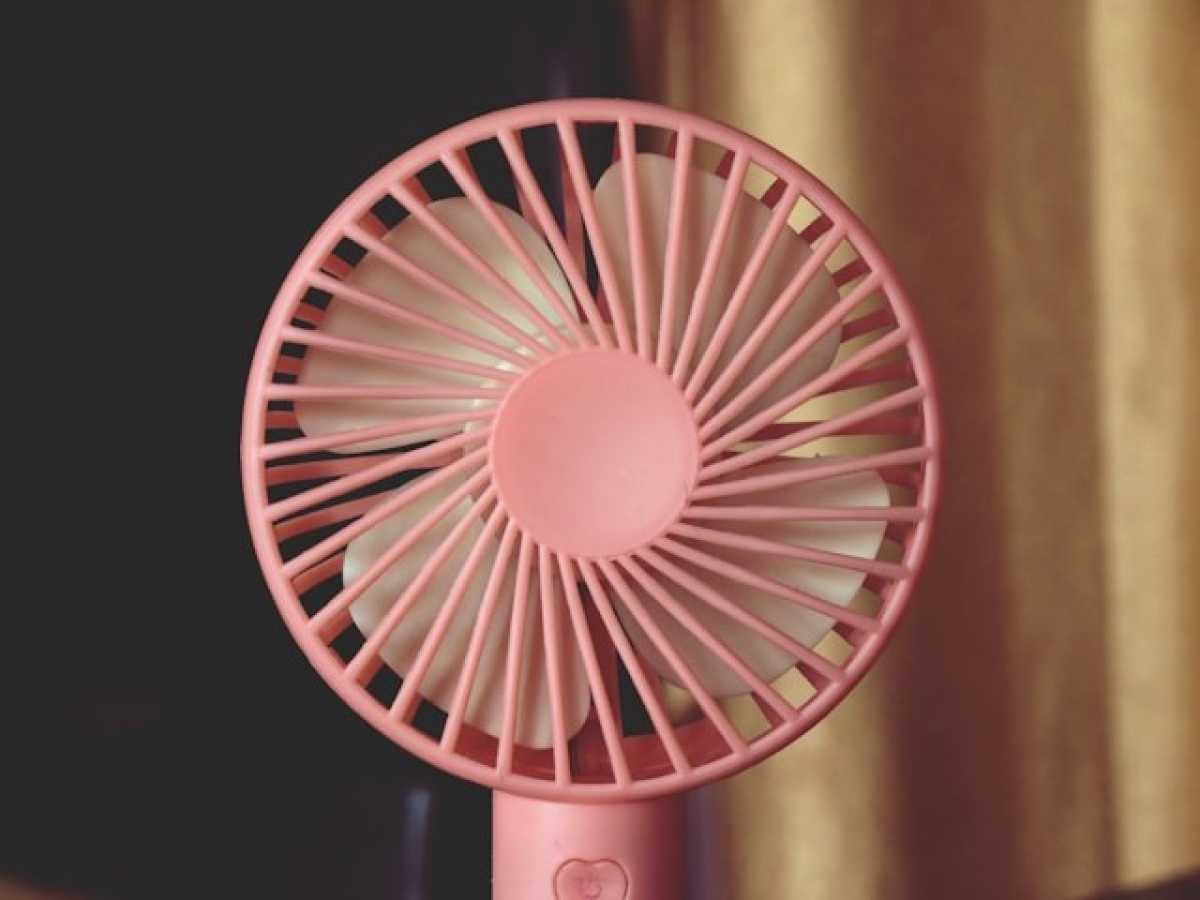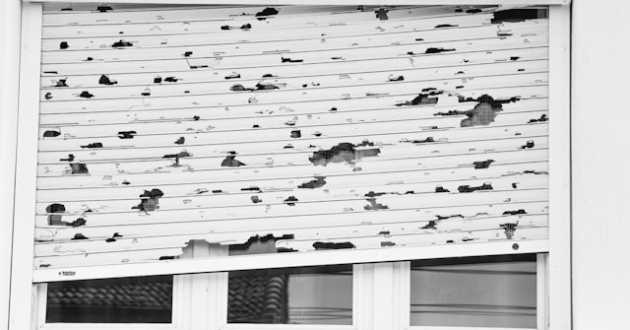Stay Chill And Comfortable This Summer With These Home Cooling Tips
- - Category: Interior Design
- - 02 Aug, 2024
- - Views: 142
- Save

Sometimes little things can make a huge difference in a home, and cooling efficiency can be increased with small steps.
Summertime often conjures images of fun in the sun, but it also brings sweltering heat that can make your home feel like an oven. For homeowners, keeping cool during these hot months can be challenging and expensive. But don't worry—there are plenty of strategies to maintain a comfortable indoor temperature without breaking the bank. This guide will walk you through practical steps to keep every part of your house cool, ensuring a more enjoyable and relaxing summer for everyone.
The Living Room Oasis
The living room is often the heart of the home, where family members gather to relax and socialize. To keep this space cool, start by strategically closing curtains or blinds during the hottest parts of the day. This can significantly reduce the amount of heat entering your home. Additionally, consider investing in thermal or blackout curtains, which are designed to block out heat more effectively than standard window treatments.
Ceiling fans are another excellent addition to your cooling arsenal. When used correctly, they can make the room feel up to four degrees cooler. Ensure that your ceiling fan is set to rotate counterclockwise during the summer months; this creates a wind-chill effect that makes the room more comfortable. Finally, avoid using heat-generating electronics such as TVs and computers during peak heat hours. These devices can contribute to the overall temperature of the room.
The Cool Comfort of Bedrooms
A good night's sleep is essential, yet difficult to achieve in a hot bedroom. Start by choosing lightweight, breathable bedding materials like cotton or linen, which help wick away moisture and allow for better airflow. Consider switching out your mattress for one with cooling technology, designed to regulate your body temperature throughout the night.
Another effective method is to position fans near windows at night to draw in cooler air from outside. This method works particularly well in areas where nighttime temperatures drop significantly. Additionally, keeping closet doors closed can help prevent the release of trapped heat into your sleeping area. Finally, using a programmable thermostat to lower the temperature a few degrees before bedtime can make a significant difference in your comfort level.
Kitchen Strategies for Staying Cool
Cooking can quickly turn your kitchen into a hotspot. To minimize heat build-up, opt for meals that don't require the stove or oven. Salads, sandwiches, and no-cook recipes are great alternatives. If you must cook, try to use appliances like microwaves, slow cookers, or toaster ovens, which produce less heat than traditional ovens.
Ventilation is crucial in the kitchen. Use your range hood or exhaust fan to remove heat and cooking odors from the room. Additionally, consider placing a portable fan in the kitchen to improve airflow. Finally, try to limit the use of heat-generating appliances like dishwashers and dryers during the hottest parts of the day.
Bathroom Bliss
Bathrooms often become uncomfortably warm and humid during summer. One way to combat this is by installing an exhaust fan if you don't already have one. Exhaust fans help remove moisture and heat, making the room feel more comfortable. Additionally, consider using cool or lukewarm water for showers and baths to reduce steam and humidity.
Another effective strategy is to switch to LED light bulbs, which generate less heat than traditional incandescent bulbs. Keeping bathroom doors open when not in use can also improve ventilation and reduce heat build-up. Lastly, consider adding a small, portable dehumidifier to help control humidity levels, making the space feel cooler and more pleasant.
Home Office Efficiency
With more people working from home, maintaining a cool home office is essential for productivity. Start by positioning your desk and computer away from direct sunlight, which can increase the room's temperature and cause glare on your screen. Using a desk fan can help circulate air and keep you comfortable while you work.
Laptops and other electronics generate heat, so consider investing in a laptop cooling pad or stand to improve airflow around your device. Additionally, unplugging devices when not in use can reduce heat output and save energy. Finally, taking regular breaks to move to a cooler part of the house can help you stay refreshed and focused throughout the day.
Attic Insulation and Ventilation
Attics can be a significant source of heat infiltration in homes. Proper insulation is crucial for keeping your house cool during the summer. Ensure that your attic is well-insulated to prevent heat from entering your living spaces. In addition to insulation, proper ventilation is essential for maintaining a cooler attic. Installing attic vents or fans can help expel hot air and improve airflow.
Consider using reflective roofing materials or applying reflective coatings to your roof to reduce heat absorption. These measures can significantly lower the temperature in your attic and, consequently, the rest of your home. Finally, sealing any gaps or cracks in your attic can prevent hot air from seeping into your living spaces, further enhancing your home's overall comfort.
Basement Cooldown
Basements tend to be cooler than other parts of the house, making them an ideal retreat during hot summer days. However, humidity can be an issue in basements, leading to a damp and uncomfortable environment. Using a dehumidifier can help control moisture levels and create a more comfortable space.
Ensure that your basement is well-ventilated by opening windows or using exhaust fans. If your basement has windows, consider installing window fans to draw in cooler air from outside. Additionally, using area rugs and insulating basement floors can help maintain a comfortable temperature. Finally, consider creating a dedicated relaxation or entertainment area in your basement to fully take advantage of its naturally cooler environment.
Outdoor Spaces and Shade Solutions
Spending time outdoors is a staple of summer, but intense heat can make patios and decks uncomfortable. Installing shade solutions such as awnings, pergolas, or shade sails can provide much-needed relief from the sun. Additionally, planting trees or installing trellises with climbing plants can create natural shade and reduce the temperature around your outdoor spaces.
Using outdoor fans can help improve airflow and make your patio or deck more comfortable. Misting systems are another effective way to cool down outdoor areas, providing a refreshing mist that can lower the temperature by several degrees. Finally, consider using light-colored, heat-reflective materials for outdoor furniture and flooring to further reduce heat absorption.
Garage Tips for Heat Reduction
Garages can become unbearably hot during the summer, making them uncomfortable for DIY projects or even parking your car. Start by insulating your garage door to prevent heat from entering the space. Adding weatherstripping around doors and windows can also help keep hot air out.
Using a portable fan or installing a ceiling fan in your garage can improve airflow and make the space more comfortable. Getting a better garage door from somewhere like Guaranteed Door Service can also improve airflow, whether through being easier to open or through other means. If your garage has windows, consider using reflective window film or shades to block out heat. Additionally, organizing your garage to minimize clutter can improve ventilation and reduce heat build-up. Finally, parking your car outside during the hottest parts of the day can prevent additional heat from radiating into the garage.
Windows and Doors for Better Ventilation
Windows and doors play a crucial role in maintaining a cool home during the summer. Start by ensuring that all windows and doors are properly sealed to prevent hot air from entering and cool air from escaping. Installing energy-efficient windows and doors can provide better insulation and reduce heat transfer.
Using window treatments such as thermal curtains, blinds, or shades can help block out heat and keep your home cooler. Additionally, consider installing window films that reflect sunlight and reduce heat gain. If possible, create cross-ventilation by opening windows on opposite sides of your home to promote airflow and improve ventilation. Finally, using door draft stoppers can help prevent hot air from seeping in through gaps under doors.
Landscaping for a Cooler Home
Strategic landscaping can significantly impact the temperature of your home. Planting trees, shrubs, and other vegetation around your house can provide natural shade and reduce heat absorption. Deciduous trees, which lose their leaves in the winter, are particularly effective as they provide shade in the summer and allow sunlight to warm your home in the winter.
Using ground cover plants, mulch, or reflective landscaping materials can help reduce heat build-up around your home. Additionally, creating shaded outdoor areas with pergolas, trellises, or arbors can provide relief from the sun and improve the overall comfort of your property. Finally, incorporating water features such as fountains or ponds can create a cooling effect through evaporation, further enhancing your outdoor spaces.
Smart Home Technology for Temperature Control
Modern technology offers several smart home solutions to help maintain a comfortable temperature during the summer. Installing a programmable thermostat allows you to set specific temperatures for different times of the day, ensuring optimal cooling without wasting energy. Companies like Pipeworks Services can help set you up with quality AC. Some smart thermostats can even learn your preferences and adjust settings automatically.
Smart fans and air conditioners can be controlled remotely via smartphone apps, allowing you to cool your home before you arrive. Additionally, using smart window shades or blinds that automatically adjust based on sunlight can help regulate indoor temperatures. Integrating these smart home technologies can provide greater control over your home's climate and improve overall comfort.
Conclusion
Keeping your home cool during the summer doesn't have to be a daunting task. By implementing these practical tips and strategies, you can create a comfortable living environment for you and your family. From optimizing ventilation and insulation to utilizing smart home technology and strategic landscaping, there are numerous ways to beat the heat and enjoy a pleasant summer indoors. Take action today and start making your home a cool and inviting oasis all season long.


